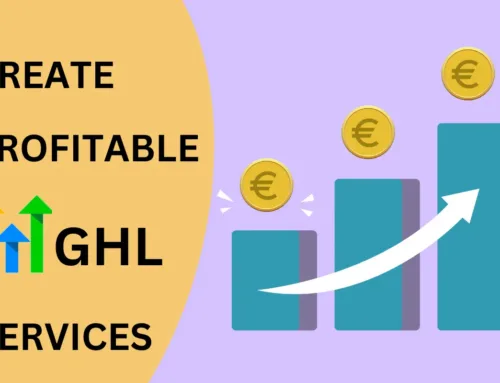As businesses and personal brands continuously vie for the spotlight on the internet, the importance of Search Engine Optimization (SEO) cannot be overstated. SEO is that silent force working behind the scenes, ensuring that your online content is easily discoverable by your target audience via search engines.
With the ever-evolving algorithms of search engines, staying updated with the latest SEO trends is paramount to maintaining or achieving a visible online presence.
As we steer into 2023, the SEO landscape is poised to continue its evolution, morphing to the new technological advancements and user behavioral shifts.
This year, there are several game-changing SEO trends that could significantly impact your website’s ranking and overall online visibility.
This article aims to shed light on these emerging trends, providing a roadmap for what to expect and how to adapt your SEO strategies accordingly.
1. Utilizing The Power of Original Data and Unique Insights
If you’re sitting on a goldmine of original data and unique insights, it’s time you leveraged them for your SEO strategy. This data, combined with unique insights, can significantly improve your visual search capabilities, leading to better conversion rates.
Original data helps you understand your potential customers better. You can tailor your video content to their preferences, which can lower bounce rates and keep them engaged.
For example, if your data suggests that your audience enjoys short, informative videos, you can focus on creating such content. This not only keeps your audience engaged but also encourages content generators to share your content, building backlinks to your site.
Unique insights give you a competitive edge. They allow you to provide helpful content updates that meet your audience’s changing needs.
For instance, if you discover through your data that your audience struggles with a particular issue, you can create content that addresses this problem. This increases your site’s relevance and can boost your click-through rate.
Leveraging original data and unique insights also helps you rank for feature snippets. By understanding what your audience is looking for, you can structure your content to answer their questions directly. This increases the chances of your content being chosen for a featured snippet, giving your site more visibility.
2. Long-Tail Keywords and Natural Language:
The use of natural language and long-tail keywords is more important than ever. With the advancement in voice search and digital assistants, users are using conversational search terms. Integrate long-tail keywords naturally in your content to improve your visibility for relevant searches.
Long-tail keywords can help your website rank higher for specific search terms, attracting a more targeted audience. Ensure your content answers common questions and provides valuable information to users.
Utilize tools to research and identify long-tail keywords relevant to your industry and integrate them seamlessly into your content. Remember, focusing on natural language and long-tail keywords can enhance your website’s relevance and visibility in search results.
Note that keyword stuffing, an outdated and harmful practice, is now easily detected by search engines and can lead to penalties. Instead, you should focus on creating valuable content that naturally incorporates keywords.
Tools like SEMrush and Ahrefs provide valuable insights into keyword usage, helping you avoid overstuffing and ensuring your content remains relevant.
3. Make Websites Accessible
While it’s essential to prioritize SEO, don’t forget that accessibility is becoming increasingly important, and it might soon become a crucial ranking factor.
With the rapid growth of digital platforms, it’s crucial for you to ensure your website is accessible to all, including those with disabilities.
For you to make your website accessible, consider factors such as color contrast, text size, keyboard navigation, and alt tags for images. These elements make your site user-friendly not only for people with disabilities but also for the general population.
Remember, Google’s algorithm is getting smarter and accessibility could be the next big thing in SEO. Google’s primary goal is to provide the best user experience. If your site is accessible to all, it’s more likely to provide a superior experience, leading to a potential boost in your rankings.
Additionally, an accessible website is likely to increase your audience size. It’s reported that around 15% of the world’s population experiences some form of disability. By making your site accessible, you’re opening your business to a broader audience, which can significantly impact your overall website traffic and conversions.
4. Content Quality and Length:
High-quality, long-form content is favored by search engine algorithms. Focus on creating valuable, in-depth content that provides comprehensive information to your audience, improving your search engine rankings and boosting customer experience.
Long-form content can establish your website as an authority in your industry, attracting more backlinks and social shares.
Ensure your content is well-researched, accurate, and provides valuable insights to your audience. Break up long-form content with headings, images, and bullet points to enhance readability.
Regularly update your content to ensure it remains relevant and accurate, further boosting your website’s credibility and search engine rankings. Remember, high-quality, long-form content can significantly enhance your website’s SEO performance.
5. Content Formats: The New Norm in SEO
As you adapt to the ever-evolving SEO landscape, you’ll find that diversifying content formats isn’t just an option, but a necessity for staying competitive. Gone are the days when text-based content was sufficient. Now, you need to consider video, infographics, podcasts, and interactive content to engage your audience.
How you present content is becoming as important as what you’re saying. Visuals are more engaging, and audio content lets your audience multitask. By providing a mix of content formats, you’re more likely to meet the varied preferences of your audience and improve user experience.
In 2023, video content is set to rule. According to a study by Sandvine, video content accounts for 65% of all organic traffic in 2022, growing by 24% in the year. This number is expected to grow, a clear sign that it’s a medium you can’t ignore.
So, start integrating videos into your content strategy. But remember, it’s not enough to merely upload videos. You need to optimize them for search as well. This includes adding relevant tags, descriptions, and transcriptions.
Similarly, the rise of voice search requires you to tweak your content format. Voice-friendly content is more conversational and answers specific questions. So, anticipate those questions and answer them in your content.
Moreover, don’t underestimate the power of interactive content. Quizzes, calculators, and surveys aren’t only engaging but also provide you with valuable data about your audience.
6. The Art of Link Building: Quality Over Quantity
In your quest to master the art of link building, it’s crucial to remember that your site’s reputation hinges more on the quality of the links you secure, rather than the quantity. Google’s advanced algorithms can detect manipulative links, so it’s important to focus on building natural, high-quality links.
Quality link building isn’t about spamming as many sites as possible. It’s about creating valuable, engaging content that other reputable sites want to link to. When you focus on quality over quantity, you’re more likely to attract links from high-authority sites. These links can significantly improve your site’s search engine rankings and visibility.
One effective method to build quality links is through white-hat link-building tactics. This might involve responding to media inquiries, positioning yourself as an industry expert or creating content that’s so compelling other sites are eager to link to it. Remember, the more useful and relevant your content, the more chances it has of earning high-quality links.
You can also employ a technique known as reverse outreach. In this approach, you create a narrative around a specific keyword, publish optimized content, then reach out to other sites that use that keyword. If your content is valuable and relevant, these sites might link back to you, further enhancing your link profile.
In the end, the art of link building is less about the number of links and more about their quality. By focusing on quality over quantity, you’ll build a stronger, more resilient SEO strategy that can stand the test of time.
7. Voice and Visual Search
Voice search and visual search are revolutionizing the way users interact with search engines. With the increasing use of digital assistants, optimizing your content for voice search is indispensable.
Similarly, visual search is gaining traction, allowing users to search using images, further emphasizing the need for high-quality, relevant visual content.
Ensure your website is optimized for voice and visual searches by incorporating relevant keywords and providing clear, concise descriptions for images. Utilize schema markup to help search engines better understand and categorize your content.
Stay updated with the latest trends in voice and visual search to ensure your website remains accessible and easy to find. Remember, convenience and ease of use can significantly enhance the customer experience.
8. User Experience: The Key to Better Rankings
Despite the intricacies of SEO, it’s crucial to understand that without a focus on user experience, you’re unlikely to achieve better rankings.
The equation is simple — if users enjoy their experience on your site, they’ll stay longer, engage more, and are more likely to return. This positive interaction signals to search engines that your site is valuable, leading to better rankings.
In 2023, Google’s Core Web Vitals will play a pivotal role in user experience. This initiative provides a set of metrics related to speed, responsiveness, and visual stability. To enhance user experience, you’ll need to optimize for these factors. Ensure your site loads quickly, responds promptly to user interactions, and avoids unexpected layout shifts.
A mobile-friendly site is also vital. More users are accessing the internet via mobile devices than ever before, so ensuring your site is responsive and easy to navigate on smaller screens will provide a better user experience, and consequently, boost your SEO.
Optimize your site for mobile searches to capture the attention of potential customers and enhance your search rankings. A mobile-optimized website ensures a seamless browsing experience for mobile users, leading to increased engagement and lower bounce rates.
Implement responsive design to ensure your website is accessible on various devices and screen sizes. Prioritize mobile optimization to cater to the growing number of mobile users and stay competitive in the digital landscape. Remember, mobile-first indexing is a crucial factor in search engine rankings.
9. AI-Generated and AI-Based Content
AI-generated content and AI-based content optimization tools are transforming content creation. Utilize AI to create high-quality content that resonates with your audience, enhancing user engagement and boosting your search engine rankings.
AI can analyze user behavior and preferences to tailor content to your audience’s needs. AI-based content tools can help content creators produce more relevant and engaging content, ensuring your website stays fresh and up-to-date.
Stay ahead by leveraging AI for content creation and optimization, ensuring your content is not only high-quality but also relevant and personalized. Remember, personalized content can significantly enhance user engagement and satisfaction.
10. Featured Snippets and Zero-Click Searches
Featured snippets continue to dominate the search results, leading to an increase in zero-click searches.
Optimize your content to appear in the featured snippet, ensuring your information is concise, clear, and helpful, enhancing your visibility in organic search results.
Create content that directly answers user queries and structure it for easy readability.
Utilize bullet points, headings, and lists to make your content more scannable. Ensure your content provides clear, concise answers to common questions to increase your chances of appearing in featured snippets.
Regularly update your content to ensure it remains accurate and relevant, enhancing your website’s credibility and authority. Remember, appearing in featured snippets can significantly boost your website’s visibility and click-through rate.
11. Improve Your Technical SEO
You also need to pay attention to technical aspects such as loading speed and schema markup. Ensure your website is technically sound to provide a seamless user experience and improve search engine rankings.
Consider the importance of loading speed. Search engines prioritize websites that load quickly, offering a better user experience. Tools like Google’s PageSpeed Insights and GTmetrix can help analyze your site’s speed and provide recommendations for improvement.
Moreover, lazy loading is a strategy worth incorporating. It delays the loading of images and other elements until they’re needed, improving initial loading speed. There are various tools available to assist with this, such as WP Rocket for WordPress sites.
Regularly audit your website to identify and fix technical issues that could impact your SEO performance. Implement schema markup to enhance your website’s visibility in search results and provide more information to users. Remember, technical SEO is crucial for ensuring your website is accessible, functional, and optimized for search engines.
Conclusion
Incorporating these SEO trends into your SEO strategy is essential for staying competitive in 2023. Focus on creating high-quality, valuable content, optimizing for voice and mobile searches, and staying updated with the latest algorithm changes to ensure your website ranks high in search engine results, attracting more visitors and potential customers.
Stay committed to providing the best user experience, keeping your content fresh and relevant, and continuously monitoring and updating your SEO strategies to adapt to the evolving digital landscape.
Remember, a robust SEO strategy is crucial for enhancing your website’s visibility, attracting more traffic, and driving business growth.




